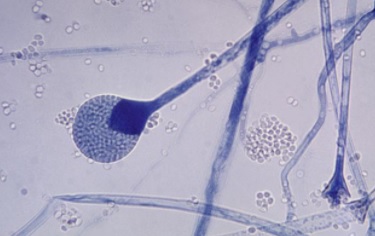The Corona virus has triggered another disease in the world Mucormycosis. While corona take people’s lives, this too is deadly and horrific virus. Let take a look at what this virus is actually and who is likely to be affected by it. According to media reports, Delhi and Ahmedabad has reported cases of Mucormycosis.

About the Virus
According to some media reports and content shared by some scientific organizations Mucormycosis was earlier called Zygomycosis. It is a rare but serious fungal infection caused by a group of molds called mucormycetes. These molds live throughout the environment. People have health problems or take medicines that lower the body’s ability to fight germs and sickness are more likely to be affected by the virus. It most commonly affects the sinuses or the lungs after inhaling fungal spores from the air, or the skin after the fungus enters the skin through a cut, burn, or other type of skin injury. However, it can occur in nearly any part of the body.
Types of mucormycosis
- Rhinocerebral (sinus and brain) mucormycosis: This is an infection in the sinuses that can spread till the brain. This form of mucormycosis is most common in people with uncontrolled diabetes and in people who have had a kidney transplant.
- Pulmonary (lung) mucormycosis: People with cancer and in people who have had an organ transplant or a stem cell transplant are more prone to this kind of disease.
- Gastrointestinal mucormycosis is more common among young children than adults, especially premature and low birth weight infants less than 1 month of age, who have had antibiotics, surgery, or medications that lower the body’s ability to fight germs and sickness. 9-10
- Cutaneous (skin) mucormycosis: This occurs after the fungi enter the body through a break in the skin (for example, after surgery, a burn, or other type of skin trauma). This is the most common form of mucormycosis among people who do not have weakened immune systems.
- Disseminated mucormycosis occurs when the infection spreads through the bloodstream to affect another part of the body. The infection most commonly affects the brain, but also can affect other organs such as the spleen, heart, and skin.
What are the Symptoms?
Rhinocerebral (sinus and brain) mucormycosis:
- Nasal or sinus congestion
- Facial swelling on one side
- Headache
- Fever
Pulmonary (lung) mucormycosis:
- Fever
- Cough
- Chest pain
- Shortness of breath
Cutaneous (skin) mucormycosis can look like blisters or ulcers, and the infected area may turn black. Other symptoms include pain, warmth, excessive redness, or swelling around a wound.
Gastrointestinal mucormycosis:
- Abdominal pain
- Nausea and vomiting
- Gastrointestinal bleeding
Disseminated mucormycosis: This typically occurs in people who are already sick from other medical conditions, so it can be difficult to know which symptoms are related to mucormycosis. Patients with disseminated infection in the brain can develop mental status changes or coma.
Who gets mucormycosis?
Mucormycosis is rare, but it’s more common among people who have health problems or take medicines that lower the body’s ability to fight germs and sickness. Certain groups of people are more likely to get mucormycosis,including people with:
- Diabetes, especially with diabetic ketoacidosis
- Cancer
- Organ transplant
- Stem cell transplant
- Long-term corticosteroid use
- Injection drug use
- Too much iron in the body (iron overload or hemochromatosis)
- Skin injury due to surgery, burns, or wounds
- Prematurity and low birthweight (for neonatal gastrointestinal mucormycosis)
How does it infect people?
Through contact with fungal spores in the environment people get mucormycosis. A skin infection can occur after the fungus enters the skin through a scrape, burn, or other type of skin injury.
Is mucormycosis contagious?
No. Mucormycosis can’t spread between people or between people and animals.
How to protect ourselves?
Protect yourself from the environment: These are some suggested ways to save yourselves from the Mucormycosis.
- Avoid areas with a lot of dust like construction or excavation sites. If you can’t avoid these areas, wear an N95 respirator (a type of face mask) while you’re there.
- Try not to go to places where buildings which are damaged by water and flood water after hurricanes and natural disasters.
- Avoid activities that involve close contact to soil or dust, such as yard work or gardening. If this isn’t possible,
- Wear shoes, long pants, and a long-sleeved shirt when doing outdoor activities such as gardening, yard work, or visiting wooded areas.
- Wear gloves when handling materials such as soil, moss, or manure.
- To reduce the chances of developing a skin infection, clean skin injuries well with soap and water, especially if they have been exposed to soil or dust.
(Contents taken from Centres for Disease control and Prevention)


